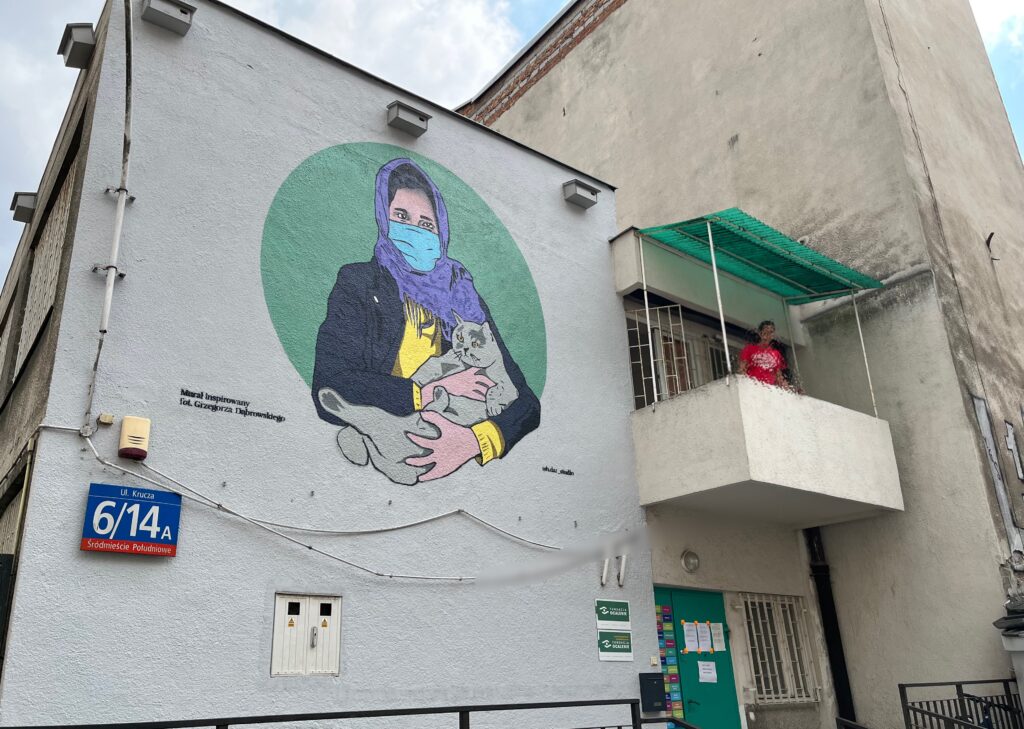Yesterday I went to the Fundacja Ocalenie head office in Warsaw to sign paperwork. There is an “Agreement on the Performing of Volunteering Services”; an acknowledgement regarding processing of personal data by Ocalenie in accordance with the EU General Data Protection Regulation (“GDPR”); a couple of consents for Ocalenie to use photographs in which I appear and some paperwork for processing of the 60 PLN (approx. USD 13.50) per diem to cover meals.
Ocalenie’s office is a modest two-story facility located within the inner courtyard of a large business block in the embassy district in Warsaw (the U.S. embassy is just around the corner, so that’s a useful landmark).

The most striking impression from my visit to Ocalenie’s campus is the striking mural painted on the building facade. The Ocalenie coordinator of volunteer programs who was hosting me explained that the mural was inspired by a photograph of an Afghanistanian refugee taken somewhere on the border between Poland and Belarus. I learned for the first time about the recent crisis along that border too. According to this article, ironically at the same time the Polish government was completely and uniquivocally opening its borders to Ukrainian war refugees, it was also feverishly working to build an 18-foot high fence along a 115-mile stretch of the border between Poland and Belarus to prevent migrants — including asylum-seekers as well as undocumented “illegal immigrants” — from entering Poland through Belarus. According to this article, sometime around the middle of 2021 a signficant number of migrants — ultimately running into the thousands, mostly young men from Syria, Iraq, Yemen, Afghanistan and several African countries — began illegally hiking crossing the border from Belarus into Poland. Polish authorities attempted to block the influx, summarily and indiscriminately turning back both asylum-seekers and undocumented illegal immigrants alike. Polish authorities accused Belarus of aiding and abetting the migrants as a form of “political warfare” in revenge for sanctions the EU had imposed against Belarus earlier in the year. Although the flow of migrants tapered in the winter months, the Polish government nonetheless began construction of the border wall in January of 2022, and it was completed by the end of June. So now Poland has on the one hand a completely open border with Ukraine and a completely closed border with Belarus. The contrast is stark, but Fundacja Ocalenie provides humnitarian aid to any refugees from either border, and indeed from any part of the world, even-handedly.
